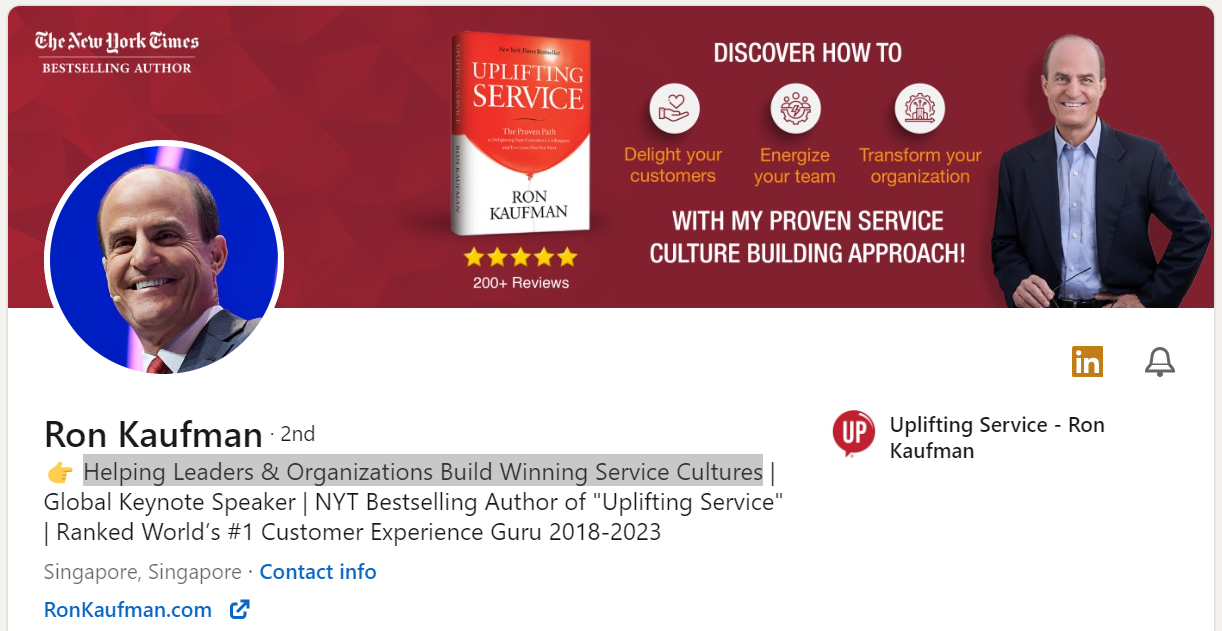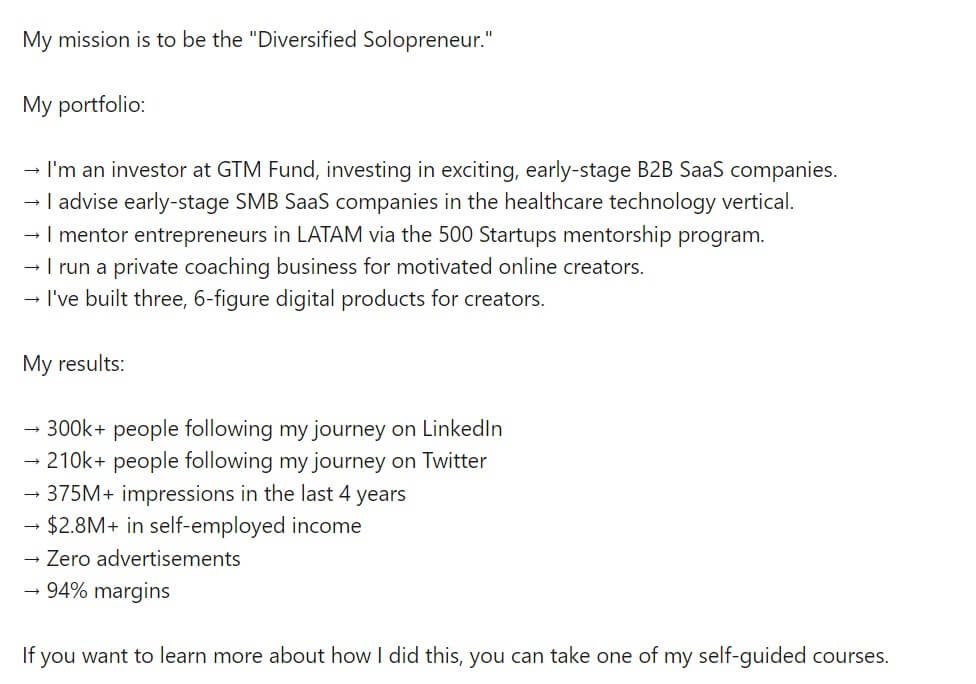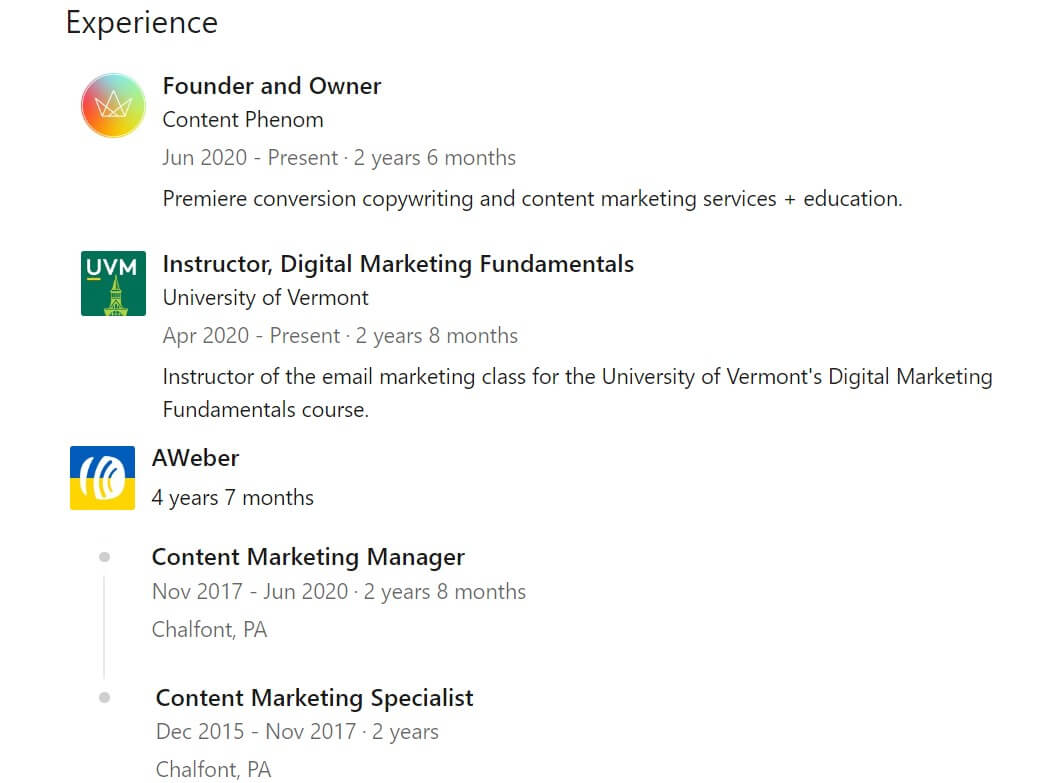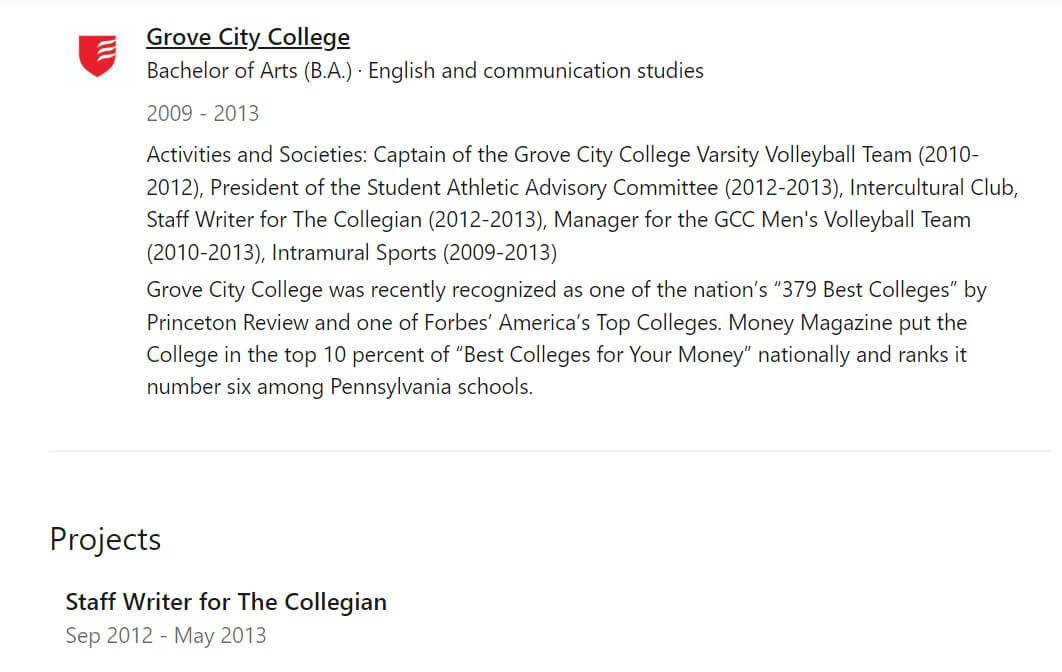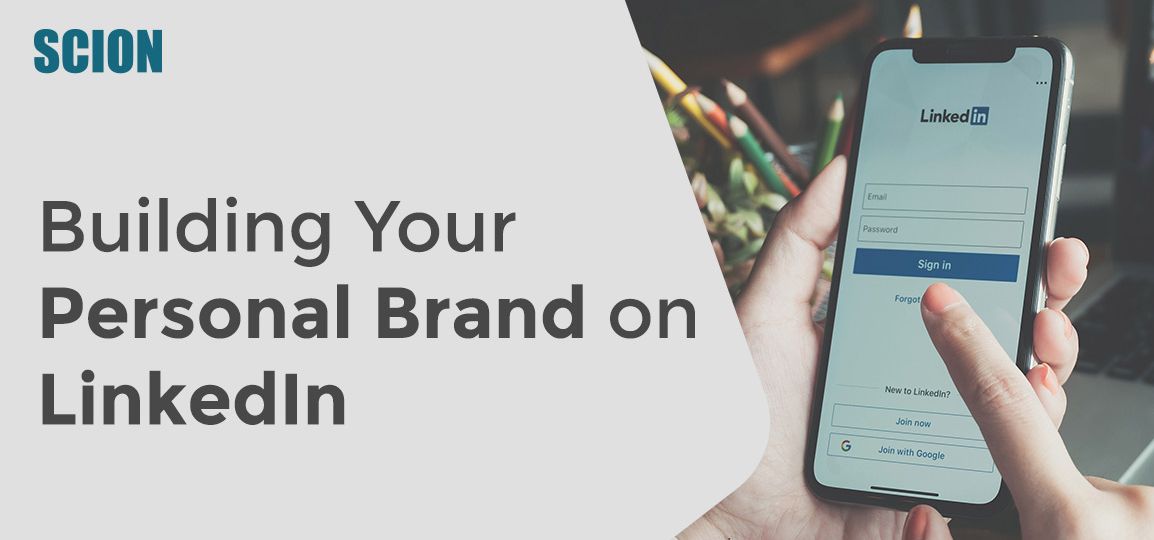
Last Updated: February 21, 2024
Building your personal brand could be the key to unlocking doors of opportunity for your business.
Whether it’s connecting you to the right talent, generating a stream of leads, or building trust in your industry, a personal brand has enormous benefits.
But only when it’s done right…which is where most people get stuck.
We’ve helped many of our clients build huge personal brands on LinkedIn. In this article, we’re going to break down the exact processes we use so you can borrow and implement them for your own brand.
Browse our table of contents to get a precise idea of the topics included:
- Importance of building a personal brand on LinkedIn
- How to Create Your Professional Personal Brand with LinkedIn
- Examples of Personal Branding on LinkedIn
- LinkedIn Content Strategy for Personal Branding
- What are the Key Elements of a Professional Personal Brand?
- Professional Branding on LinkedIn – Mistakes to Avoid
- Personal Branding Strategy on Social Media
- Conclusion
Importance Of Building A personal Brand On LinkedIn
Building your personal brand can help position you as an expert in your industry and build your network.
And now, more than ever, people are using social media to discover new opportunities and make connections.
Most importantly, if you are building your business, it gives you a huge marketing advantage.
For example, growing a LinkedIn following will give your business instant social proof, and establish you as an authority within your industry.
This will lead to benefits such as:
- Your outreach requests and InMail are more likely to get answered
- Higher reach and visibility for your business
- There will be more interest in you, and your business
- Your brand is more likely to be recognized within your industry
How to Create Your Professional Personal Brand with LinkedIn
Creating a professional personal brand with LinkedIn is quite similar to how it would be on other platforms. The main difference is that LinkedIn is optimized for a professional setting, so there are more details you can give for your profile.
1. Choose a Professional Profile Photo
Your profile photo is the first thing people see when they visit your profile, so make sure it’s professional.
For example, avoid using selfies or photos with friends and family and opt for something more polished, like a headshot.
There is an exception to that, depending on the brand image you want to put out.
2. Introduce Yourself With Your Headline
Your headline is the next thing people see on your profile, so use it to introduce yourself and your expertise accurately.
Don’t just stick with the default job title, be creative and showcase your unique value proposition.
3. Showcase Your Experience
Include relevant work experience on your profile by adding positions from past and current jobs, volunteering, and other professional experiences.
Use the opportunity to highlight specific accomplishments and achievements.
4. List Your Education
Don’t forget to include your education on your profile, including degrees earned and any specializations or certifications. This shows that you’ve invested in your professional growth and can also be used as a way to connect with alums from your alma mater.
5. Share Your Expertise
Share articles, videos, or other content that showcases your expertise and experience in your industry. This helps position you as an expert and thought leader and can also help make valuable connections with those who engage with your content.
6. Turn on Creator Mode and ensure you’ve completed your profile
Enabling Creator Mode on your profile allows you to share long-form posts and appear in search results for LinkedIn’s publishing platform.
It also signals to others that you are an active user and helps ensure you have a complete profile with all the necessary information.
Most importantly, it will give your profile and content more visibility/impressions (Pretty vital if you are building a personal brand).
7. Customize Your LinkedIN URL
Make it easy for people to find you by customizing your LinkedIn profile URL to include your name or a variation. This is also helpful when promoting your personal brand on other platforms or offline networking.
8. Connect and Engage with Your Network
Don’t be afraid to reach out and connect with professionals in your network or even those you would like to form a connection with. And once connected, make sure to engage with their content by liking, sharing, and leaving thoughtful comments.
Examples of Personal Branding on LinkedIn
To help you get a better idea of what a great personal brand on LinkedIn might look like, we’ve got a couple of examples for you.
Ron Kaufman
Ran Kaufman’s brand revolves around being a global keynote speaker and assisting leaders and organizations in building winning service cultures. He has amassed over 450,000 followers on LinkedIn.
The way Ran Kaufman showcases his experience
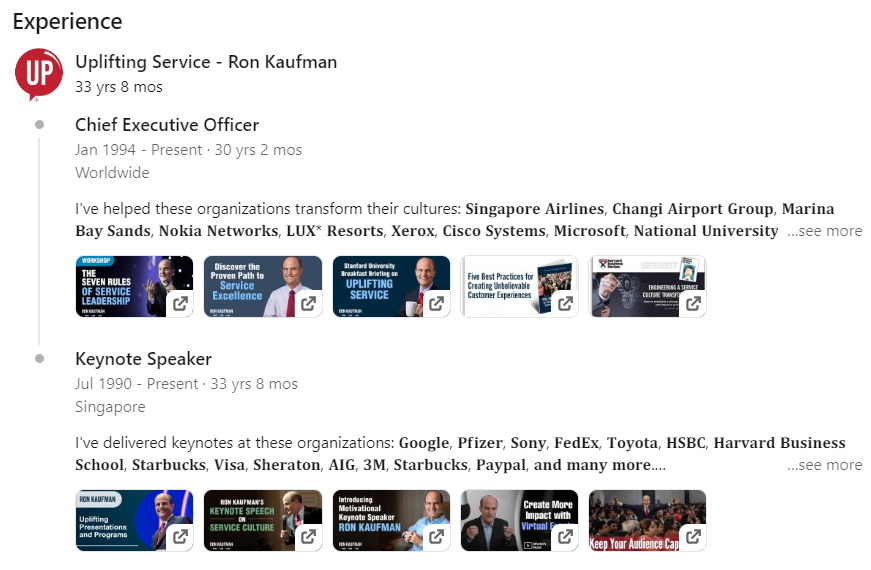
Justin Welsh
Justin’s brand is around being a Solopreneur, and he breaks down lessons from the process. He’s built a following of over 300,000 followers on LinkedIn.

As you can see by his profile, he’s very clear on who he’s targeting, what he does, and what the audience can expect.
His content does the same.
Liz Willits
Liz is a Brand Storyteller, content marketer, and SaaS investor. She uses her LinkedIn profile to showcase her experience, education, and expertise in the field. She also frequently shares relevant content and articles in her feed, positioning herself as a thought leader in the space.
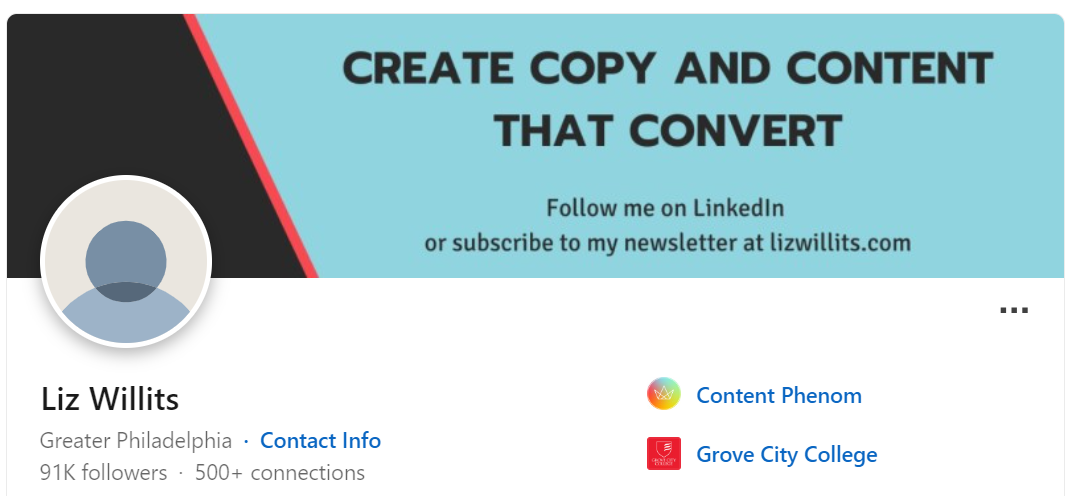
LinkedIn Content Strategy for Personal Branding
Next, we wanted to look at the content strategy for building a personal brand with LinkedIn.
When it comes to your content strategy, you need to make sure you are doing the following:
- Be clear on your niche
- Making it personal
- Staying consistent and frequent
- Sharing expert insights
- Engaging with others
- Actively building your network
You are ultimately consistently showing the audience that you’re an interesting, and authoritative person in the space to follow (as you make it personal, and share expert insights) that shares valuable lessons which will help them solve their pain points.
Engaging with others and actively building your network will accelerate your growth, and help you get more profile views, leading to more engagement and followers, which leads to more reach.
Niche
When it comes to building a personal brand on LinkedIn, you also want to ensure you are crystal-clear on your niche:
- Who you want to help
- How you want to help them
This will help you create content that will reach them, and solve their pain points. From there, they are more likely to like, comment and share which will increase your reach.
Make it personal
Share stories, experiences, and lessons learned in your posts to showcase who you are as a professional.
Whenever you go to an event, take a photo and post it.
Whenever you have an anniversary at your company, post it.
Whenever you meet other professionals for dinner, post it.
People love to see the personal side, so show it.
Consistency & Frequency
This also ties in with making it personal – consistency is vital for building a personal brand.
So make sure you have a consistent schedule and stick to it. This helps establish trust and authority in your industry.
And most importantly, it helps you find what works.
Regarding post frequency, we’d recommend posting 1x per day, as this can help you grow faster.
But if you find that hard, 2-3x per week can work well too.
Share expert insights
Share valuable insights, tips, advice, and resources in your posts.
This helps position you as an industry expert and provides valuable information for your network.
Engage with other’s content
Make sure to engage with the content of others in your network – leave thoughtful comments, like posts, and share whenever appropriate.
This helps establish strong relationships and can lead to potential collaborations or partnerships.
Plus, your audience will appreciate if you share valuable content in your niche too.
Bonus tip: Whenever you make a post, engage with your network for 20-30 minutes if you have the time. Many of the connections you engage with will return the favor.
Hustle to the first 1,000
LinkedIn has a significant advantage in that you can send connection requests to build up your initial followers.
Furthermore, you can do this until you’re at the weekly max, which can help you build industry-relevant connections.
Once you have a foundation of connections, your content will get more engagement and reach.
Starting Quotes
Another step you can implement is creating your own quotes.
For example, if you come up with an interesting thought, you can then post it as a quote image and brand it. Consider creating some templates in Canva or Photoshop with a picture of you where you can quickly insert the quote and post the image.
This isn’t just a great way to create content, it can also help you build massive brand awareness when others quote you.
Making use of Linkedin Insights for Content Planning
The LinkedIn Insights and Research center is a great tool to use when planning your content.
It offers valuable insights into your target audience. For example, let’s say you want to target C-level executives, you can see who they are following, the topics they are interested in, and the most common skills they have.
You can then talk about the topics, skills, or the influencers to gain their attention. Additionally, you can also leave valuable comments on the influencers posts early to get more visibility from your target audience.
What are the Key Elements of a Professional Personal Brand?
The critical elements of a professional personal brand are:
- A unique and authentic personal story or message
- Consistency in your content, image, and values
- Valuable insights or expertise
- Engagement with your network
- Building a solid presence on LinkedIn and other social media platforms
Professional Branding on LinkedIn – Mistakes to Avoid
Here are some mistakes that you’ll want to avoid when personal branding on LinkedIn:
- Having an incomplete or outdated profile
- Not customizing your URL
- Lack of consistency in content and image
- Failing to engage with your network
- Being too salesy or self-promotional in your posts. Personal branding is about presenting yourself as an expert and thought leader by providing value.
Most importantly, you want to avoid posting low-quality content. Unfortunately, there are tons of tools that automatically post your blog posts and cut the intro out.
While this may sound good in theory, your content will get lost in the noise. When you publish low-quality content consistently, people won’t listen when you post your important content.
Personal Branding Strategy on Social Media
If you want to combine your LinkedIn social media content with other platforms, then follow the tips below.
Repurpose Content
You don’t have to create new content for each social media platform constantly.
Instead, take your best-performing LinkedIn posts, and repurpose them into different formats for other platforms.
For example, if you have a long blog post on LinkedIn, break it up into bite-sized chunks on Twitter or Instagram.
Or, when you have a thread on Twitter, you can also use a tool like Taplio LinkedIn Carousel Generator to turn it into a LinkedIn/Instagram Carousel. Note: These carousels perform extremely well on LinkedIn!
You can also screenshot your tweets automatically to post on other platforms like LinkedIn/IG using Pikaso.
Native Content
Whatever platform you are posting on, make sure you post in the native format as it performs best. Avoid links because social media platforms try to keep their users on their platforms.
Schedule Content ahead
A tool like Hootsuite, Later, or Buffer can help you schedule your content in advance and ensure it’s consistent.
We recently created a blog post around the best social media automation tools.
Focus on the audience
Unfortunately, too many personal brands post what they think is interesting instead of focusing on what educates, entertains, or inspires the audience.
When you want to grow an audience, it’s always best to focus on them:
- Their wants
- Their needs
- Their pain points
Ultimately, they decide what value is… Not you.
Conclusion
Building a professional personal brand on LinkedIn is a great way to showcase your expertise and network with other professionals in your industry.
It’s a way to share your unique story, remain consistent, provide valuable insights, and engage with your connections.
To summarize, here are the steps to building a professional personal brand on LinkedIn:
- Choose a professional profile photo
- Introduce Yourself With Your Headline
- Showcase Your Experience
- List Your Education
- Share Your Expertise
- Turn on Creator Mode and ensure you’ve completed your profile
- Customize Your URL
- Connect and Engage with Your Network
Remember to also repurpose your content, use native formats, schedule posts in advance, and keep your audience in mind.
With these tips, you’ll be well on creating a successful professional personal brand on LinkedIn.
For more digital marketing news and updates, visit our blog, where we break down the latest technology to help you succeed.
Want us to run your social media campaign? Book yourself in for a free consultation to get started.
Interested in doing outreach with LinkedIn? Check out these posts:
Maximizing Your LinkedIn Outreach with InMail templates
Automating LinkedIn Outreach using Sales Navigator and Other Tools

